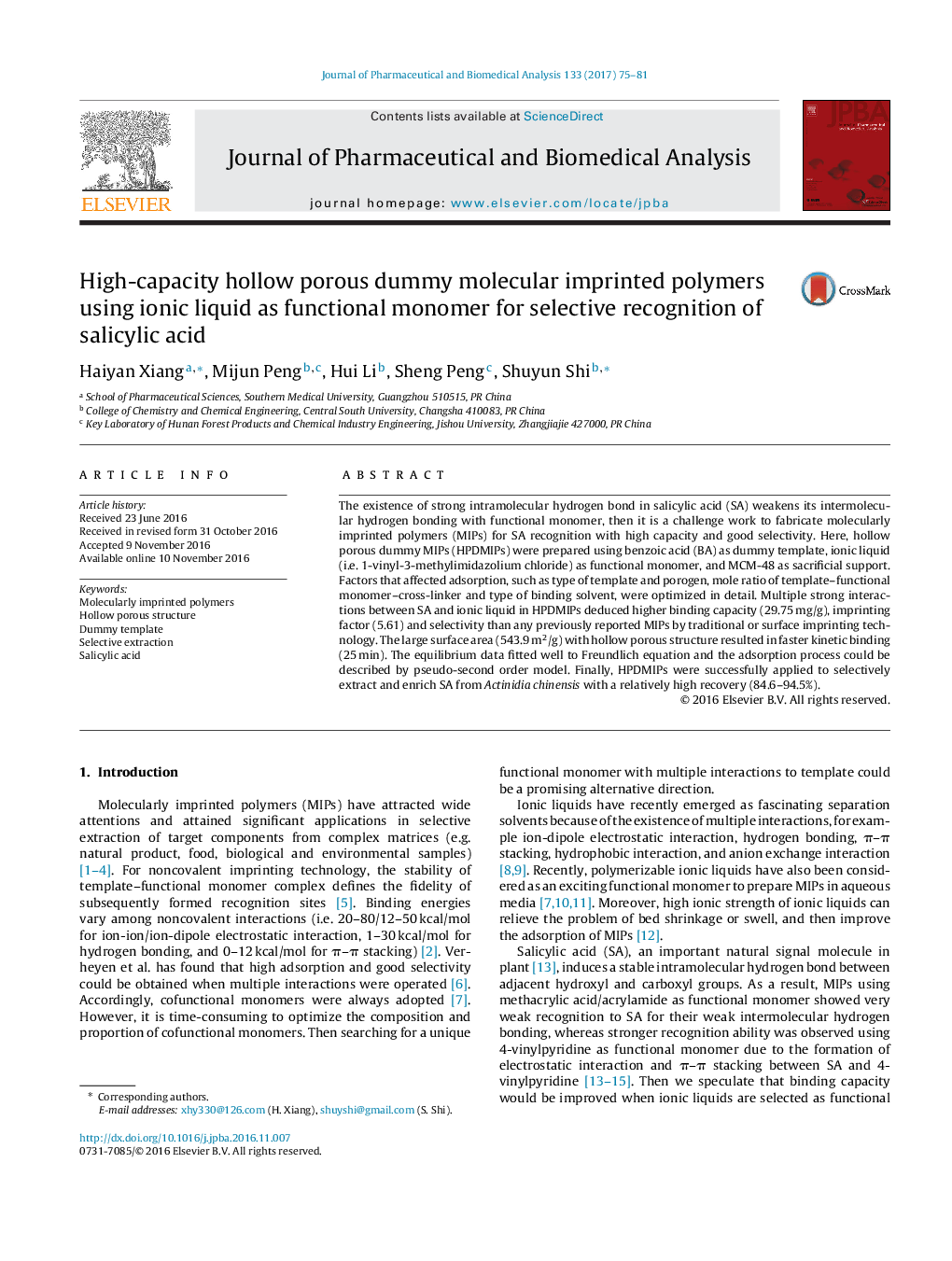| Article ID | Journal | Published Year | Pages | File Type |
|---|---|---|---|---|
| 5138398 | Journal of Pharmaceutical and Biomedical Analysis | 2017 | 7 Pages |
Abstract
The existence of strong intramolecular hydrogen bond in salicylic acid (SA) weakens its intermolecular hydrogen bonding with functional monomer, then it is a challenge work to fabricate molecularly imprinted polymers (MIPs) for SA recognition with high capacity and good selectivity. Here, hollow porous dummy MIPs (HPDMIPs) were prepared using benzoic acid (BA) as dummy template, ionic liquid (i.e. 1-vinyl-3-methylimidazolium chloride) as functional monomer, and MCM-48 as sacrificial support. Factors that affected adsorption, such as type of template and porogen, mole ratio of template-functional monomer-cross-linker and type of binding solvent, were optimized in detail. Multiple strong interactions between SA and ionic liquid in HPDMIPs deduced higher binding capacity (29.75Â mg/g), imprinting factor (5.61) and selectivity than any previously reported MIPs by traditional or surface imprinting technology. The large surface area (543.9Â m2/g) with hollow porous structure resulted in faster kinetic binding (25Â min). The equilibrium data fitted well to Freundlich equation and the adsorption process could be described by pseudo-second order model. Finally, HPDMIPs were successfully applied to selectively extract and enrich SA from Actinidia chinensis with a relatively high recovery (84.6-94.5%).
Keywords
Related Topics
Physical Sciences and Engineering
Chemistry
Analytical Chemistry
Authors
Haiyan Xiang, Mijun Peng, Hui Li, Sheng Peng, Shuyun Shi,
